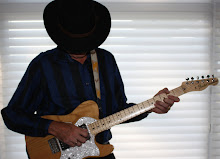I remember how excited my friends and I were when CHUM FM switched from classical music to album rock. Now we could hear not just the commercial stuff, but the trippy songs too. Now we could hear artists on the fringe. We could hear experimental music, blues, folk, jazz fusion, hard rock, acid rock, and progressive rock along with pop.
And yes, we could hear more Jimi Hendrix and less Petula Clark.
Looking back, there was stunning variety on the CHUM AM, but at the time the main attraction of stations like CHUM FM was even more variety.
Then over time the formulas crept in, the suits took over, and the genres splintered and formed the base of separate sub-cultures. The AM stations became all talk and the FM stations became Top 40, but all specialized.
Who decided variety was a four letter word?
A few years ago a radio station in Florida announced it was switching to an all Led Zeppelin format. I remember thinking, "cool publicity stunt, but stupid." I mean, what are we talking about, 120 songs? 150 if you count the live stuff? Ridiculous, right?
Not really. I read a while ago that the average radio station has a playlist of 36 songs. Each week, they rotate 4 songs out and 4 new songs in. So it takes around 9 weeks for the playlist to turn over. If the Led Zeppelin station has used that process it would take 30 weeks. Not bad considering you'd get hard rock, blues, folk, prog rock and straight up rock and roll in the process. You wouldn't get that kind of variety over any 30 week period on any station out there today. You'd get the same cloned voices shouting "you piss me off" or whining "you're such a loser." Or you'd get the same song from the same artist you've heard a million times, and wonder, "did he only record this one song?"
With today's 36 song play list, you'll go about 4 hours before the songs start repeating, given commercials and babbling. Hmmm ... and if the Led Zeppelin station went straight through the song catalogue you'd go 13 hours.
So there you go, an all Led Zeppelin radio station would give you three times the variety of your average station out there today.
And yes, we could hear more Jimi Hendrix and less Petula Clark.
Looking back, there was stunning variety on the CHUM AM, but at the time the main attraction of stations like CHUM FM was even more variety.
Then over time the formulas crept in, the suits took over, and the genres splintered and formed the base of separate sub-cultures. The AM stations became all talk and the FM stations became Top 40, but all specialized.
Who decided variety was a four letter word?
A few years ago a radio station in Florida announced it was switching to an all Led Zeppelin format. I remember thinking, "cool publicity stunt, but stupid." I mean, what are we talking about, 120 songs? 150 if you count the live stuff? Ridiculous, right?
Not really. I read a while ago that the average radio station has a playlist of 36 songs. Each week, they rotate 4 songs out and 4 new songs in. So it takes around 9 weeks for the playlist to turn over. If the Led Zeppelin station has used that process it would take 30 weeks. Not bad considering you'd get hard rock, blues, folk, prog rock and straight up rock and roll in the process. You wouldn't get that kind of variety over any 30 week period on any station out there today. You'd get the same cloned voices shouting "you piss me off" or whining "you're such a loser." Or you'd get the same song from the same artist you've heard a million times, and wonder, "did he only record this one song?"
With today's 36 song play list, you'll go about 4 hours before the songs start repeating, given commercials and babbling. Hmmm ... and if the Led Zeppelin station went straight through the song catalogue you'd go 13 hours.
So there you go, an all Led Zeppelin radio station would give you three times the variety of your average station out there today.
